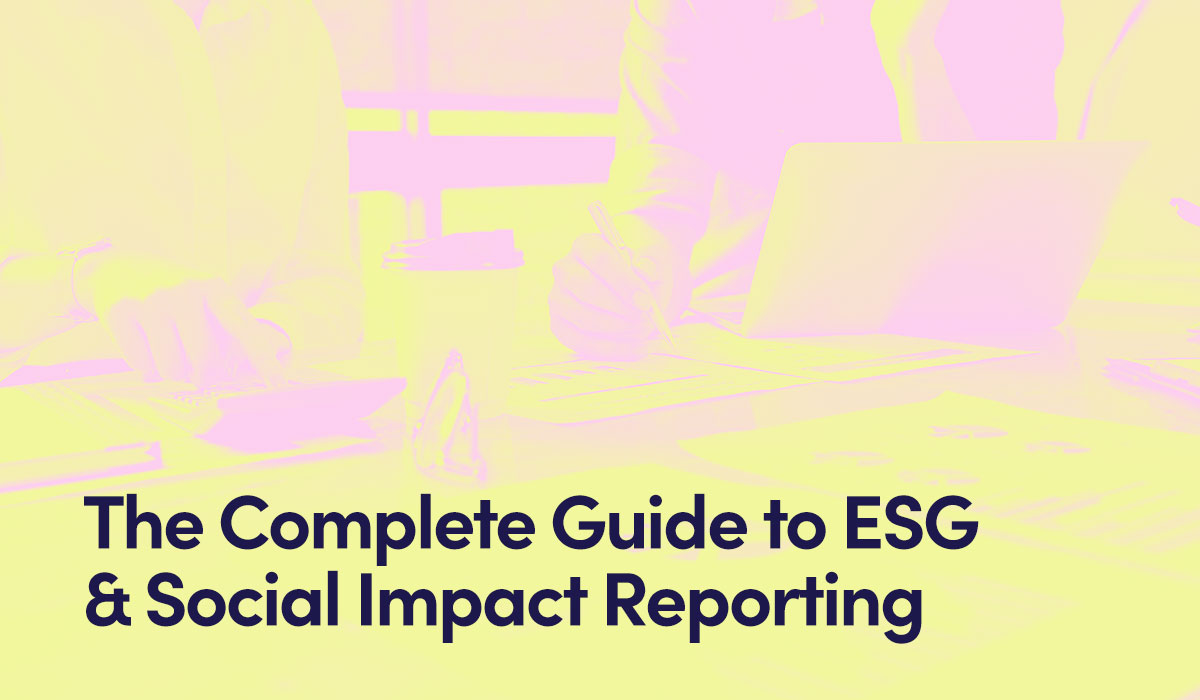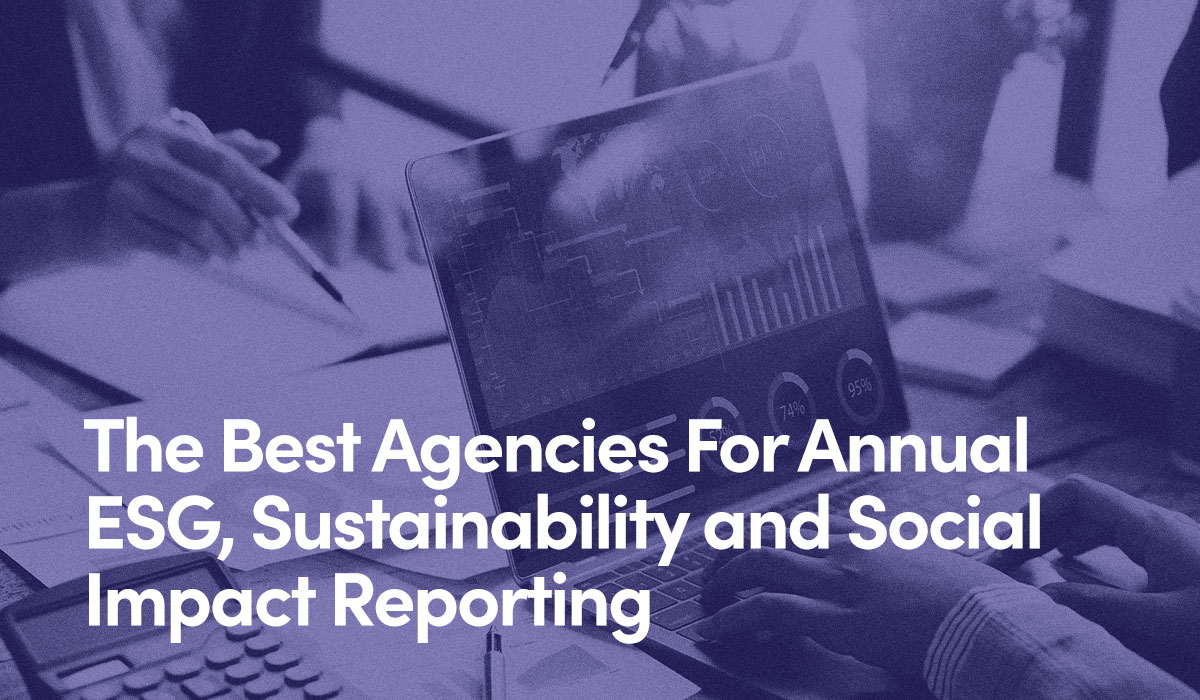In a world where the business community is increasingly being held accountable for issues related to its social and environmental impacts, comprehensive tracking and reporting on key initiatives has never been more vital. Simply put, you must make a concerted effort to run your business in a way that adheres to the best practices associated with the environment, social impact, inclusion, and more. Consumers, especially, demand this. And leveraging impact reports can help improve your brand reputation among key stakeholders.
It’s difficult to weigh the environmental and social impact of your business when you don’t understand the inherent differences in the various types of reporting, however. This blog provides that critical framework for Environmental, Social, and Governance (ESG); Corporate Social Responsibility (CSR); Social Impact; and Diversity, Equity & Inclusion (DEI) reporting.
What Is Annual Reporting?
Annual reporting documents the financial health and inner workings of your operations in stark transparency. Following the stock market crash of 1929 and subsequent dark cloud of the Great Depression, lawmakers mandated standardized corporate financial reporting. This gave way to annual reports becoming the standard operating procedure for public companies, business ventures, and corporate entities.
Annual reports typically include:
- Structural Information
- Financial Highlights
- Letters to Shareholders
- Graphics & Photos
- Management's Discussion & Analysis (MD&A)
- Auditor’s Report
- Accounting Policies
- Financial Data Summary
- Financial Statements
- Balance Sheet
- Income Statement
- Cash Flow Statement
Annual reports of a financial nature are one thing—those outlining ESG, CSR, Social Impact and DEI are another animal altogether. The ways in which a company manages its environmental, social, and governance-related processes matter a great deal to consumers, employees, and investors, and this underscores the importance of publishing such reports. But what about CSR, DEI, and non-financial social impact reporting? How do those fit into the annual reporting equation?
ESG, CSR & DEI Reporting
Here’s the most crucial bit of information regarding ESG, CSR, and DEI reporting: These are not future trends projected to impact the business world in 10 or 20 years. No, these three measuring sticks of business behavior are in full tilt right now. So if you aren’t already on board, you’re officially living in the past.
Fueled, in part, by major upheavals in environmental issues and matters of racial, equity, and social significance, there’s a sustained focus on everything covered in ESG, CSR, and DEI reporting. And that anecdotal evidence is supported by data. Research shows that more than 80 percent of organizations have implemented DEI programs. Additional research demonstrates that of the companies listed on the S&P 500, 90 percent publish an annual CSR report and 90 percent report ESG metrics, as well. The push toward ESG reporting specifically comes as governments are proposing or adopting new rules around climate-related disclosures, including in the United States and Europe.
While the key to simultaneously excelling at ESG, CSR, and DEI is to build organizational alignment by integrating all three pillars into your business, it’s vital to understand each on an individual level. This provides a roadmap to connecting ESG, CSR, and DEI into one mission.
ESG Reporting
A yearly report that outlines ESG discloses information regarding a company’s operations and performance in environmental stewardship, social responsibility, and corporate governance. A proper ESG report that utilizes a reporting framework gives investors a view into your inner workings, helping them screen investment opportunities. It’s also valued by consumers concerned about various environmental and social issues who want to support businesses that share some of their values.
ESG reports are:
- Data Driven: ESG reports are built to better inform key stakeholders and investors.
- Compliance Related: ESG disclosures are increasingly becoming standardized and regulated.
- Increasingly Standardized: ESG metrics must collect and disclose specific stats based on accepted frameworks.
- Focused on Risks & Opportunities: ESGs are built to identify and manage risks and opportunities.
CSR Reporting
Where ESG disclosures are trending toward becoming mandatory, especially for multinational conglomerates, CSR is a more voluntary way of engaging and motivating team members. CSR reports, which are non-financial, communicate a company’s activities in service of giving back to the community and/or environment. This could include volunteer and community service projects involving employees, which demonstrates your company’s commitment to aligning with the values of both current and potential employees.
At the same time, investors and the public will be scrutinizing such reports, so transparency is paramount. They must also be flush with detail about corporate responsibility initiatives. In the case of the environment, the focus should be on reducing—if not eliminating altogether—harmful environmental practices, efforts to transition to clean energy, and investing in carbon offsets. To get a sense of how seriously organizations are taking CSR reports, many are hiring leading accounting firms, such as the so-called “Big Four” institutions, to ensure their claims about corporate responsibility are credible.
As with other strategic initiatives, CSR reports should be part and parcel of broader plans to make your organization more socially responsible, which is important to potential investors and consumers alike.
CSR reports are:
- Brand Driven: CSR initiatives help paint a positive corporate reputation.
- Internally Motivated: CSR reports are composed by companies under their own volition.
- Independently Developed: CSR reports are generally unique to each company.
- Based on Internal Principles: CSRs organize a company’s values based on a shared code of ethics.
Showcase Your Positive Impact on the World
Want to Connect With Values-Driven Consumers and Investors?
Amplify Your Story With Social Impact Reporting arrow_forwardDEI Reports
Diversity, equity, and inclusion (DEI) affects all aspects of a company’s operations—from the top down, as well as internally and externally facing. As such, a DEI report can often be included as a subsection in ESG and CSR reports, or as a standalone. DEI works to conceptualize a framework for promoting the fair treatment and full participation of all people, no matter their background, disability, or identity. And a DEI report describes the real action taken by a company in service to an all-inclusive workplace, which falls under both ESG and CSR umbrellas.
While DEI reports have become more common over the last decade, they took on greater significance following the 2020 racial justice uprisings sparked by the killings of George Floyd and Breonna Taylor. But simply publishing a DEI report does not guarantee that an organization will become more diverse or create a greater sense of belonging. As a Harvard Business Review article notes: “For data reporting and goals to be effective, they must be detailed to create transparency; shared with insiders and the public to induce accountability; and accompanied by action plans to promote change. When companies have followed these principles, they’ve seen notable increases in women and people of color in management.”
Specifically, the HBR piece differentiates between DEI reports that are meant for public consumption versus those that are more detailed in their data reporting—mainly those that are required to submit EEO-1 reports, which is required under the Civil Rights Act of 1964.
“While more than half of Russell 1,000 companies were reporting data by September 2021 less than one in 10—among them Ford Motors, Allstate, CVS, Colgate Palmolive, Intel, Lowe’s, Lyft, and UPS—was reporting the detailed EEO-1 data that they prepare for Washington, which are broken down by gender, race, and ethnicity for 10 job categories,” reads HBR. “The reports that companies provide for public consumption, moreover, elide key information, by lumping together all non-white employees, workplaces, or jobs. Companies that do this aren’t maximizing awareness and accountability, which are prerequisites for effecting change.
The bottom line is that while it's encouraging that more and more firms are recognizing the value of publishing DEI reports, the truth is most are neglecting to provide the kind of detailed analysis that will inevitably help them achieve their stated goals.
DEI reports are:
- Diversity Driven: DEI provides a sense of belonging to all people.
- Ethically Motivated: DEI promotes a strong sense of value and community.
- A Modern Development: DEI reports are a relatively new addition to annual reporting.
- Meant to Attract Diverse Applicants: DEI can help you cast a wider, more worldly net for new talent.
Non-Financial Social Impact Reporting
As we've documented, non-financial impact reporting emerged decades ago out of concern over destructive products. Such reporting mechanisms now include everything from sustainability, ethical supply chain practices, DEI, labor practices, gender equality, social justice initiatives, and much more.
Non-financial social impact reporting clarifies an organization's mission to key stakeholders, including employees, consumers, and investors. As with other reporting mechanisms, such reporting should provide transparency about internal benchmarks, even if the data doesn't support previously published goals.
It's important to remember that the goal isn't simply to produce a yearly report about your efforts—but to identify successes and failures so your organization can make necessary changes to improve your community and the world around you.
You’ll notice that many of these reporting alternatives share common characteristics. The benefit of non-fiancial social impact reporting is it allows you to address a variety of societal issues, supported by data. Its structure allows you to leverage reports to improve brand recognition, especially among the growing number of consumers and investors who want to support socially conscious organizations.
Key Takeaway
While differences exist between ESG, CSR, DEI reporting and non-financial social impact reporting, each one adds color to a company’s organizational picture. More than that, each type of reporting works together to demonstrate full transparency to consumers and investors, as well as current and future team members. Cutting any of these three out of annual reporting leaves a gap in your company’s overall story.
Today's consumers and investors demand more transparency from the business community. We support organizations by developing a compelling narrative that clarifies your message, amplifies your mission, and empowers customers, investors, and talent to better engage with your brand. Learn more about our non-financial impact reporting capabilities.



